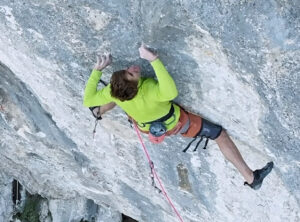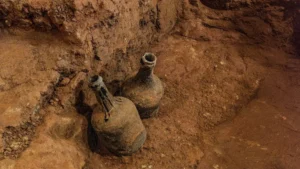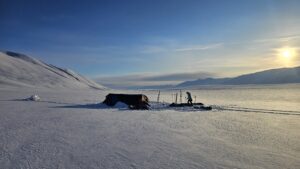Leave it to Mother Nature to drop the hammer on some of Earth’s hardiest human settlers.
Vikings thrived in their adopted home of Greenland starting around 985 AD. But after the enterprising Scandinavian seafarers had weathered just a few centuries there, they vanished without a trace. The record of Viking artifacts in Greenland abruptly ends in the 1400s.
Researchers have scrambled to explain why. The Vikings faced drought to the south and retreating walrus herds to the north, prevailing theories hold. Meanwhile, a new study shows that rising seas were eating up the coastline of their Eastern Settlement — fast.
Sea levels could have surged by up to three meters during the four centuries the Norse occupied coastal Greenland. Researchers at Harvard University and Pennsylvania State University used a computer model based on geological and climate records to show that the Vikings experienced an alarming loss of land: 204 square kilometers during their tenure.

A map of the Eastern Settlement. Photo: Wiki Commons
A recent study in the journal PNAS outlined the findings. The swelling seas were a consequence of the Little Ice Age (which began around 1250) and are an “overlooked” factor in the Vikings’ disappearance from Greenland, the researchers suggest.
You might think that the massive ice sheets of the Little Ice Age would mean lower sea levels. But as the Greenland Ice Sheet advanced toward the southern settlements, it drew sea water toward it through the force of gravity, according to the paper. The Vikings were in the wrong place at the wrong time.
And the resulting floods could have given the Vikings another reason to abandon the outpost. The settlers would have lost vital croplands to flooding, and lain more vulnerable to storms and coastal erosion.
The floods couldn’t have come at a worse time for the Vikings of Greenland. Northern hunters were already chasing walrus herds further and further beyond the Arctic Circle. The drought in the south left livestock farmers with feed levels that made winters unsurvivable for their animals, one paleoclimatologist found.
Adept on the open water as the Vikings were, there’s little doubt widespread flooding would have exacerbated their social collapse.

The ruins of Hvalsey Church. Photo: GRID-Arendal via Flickr
Despite the onrush of evident catastrophes, the doomed population fought to retain its propriety. The final written evidence of Vikings in Greenland comes from Hvalsey Church in the Eastern Settlement — a record of an early 15th-century wedding. Radiocarbon evidence places the end of their occupation about a half-century afterward.






